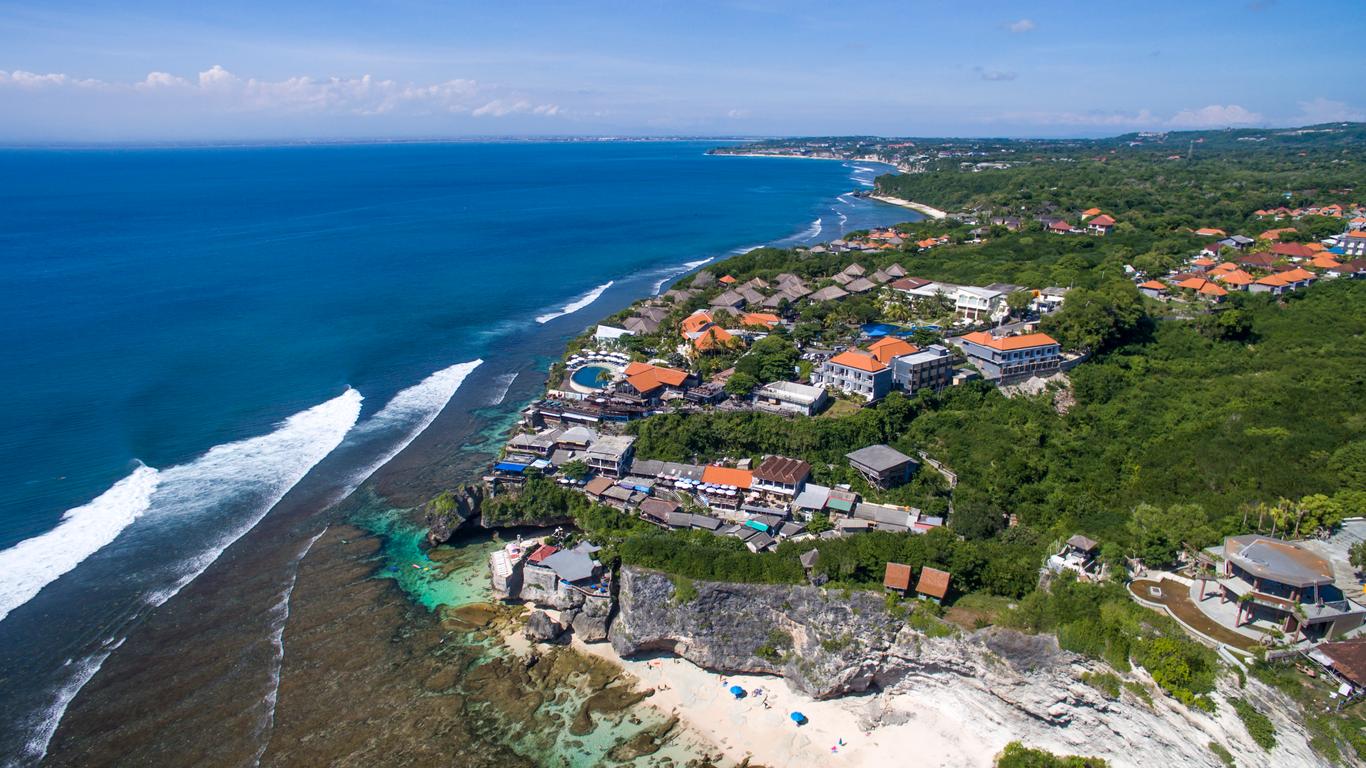The cliff-hanging temple at Uluwatu makes for one of Bali’s most iconic images, where spirituality merges with vertical limestone cliffs and crashing tropical waves. It’s the main visitor highlight of Uluwatu village, located on the Bukit Peninsula, the southernmost tip of Bali. Nature reigns free here, and there’s a rural backwater atmosphere, exemplified by the almost empty beaches and hidden destinations amongst the cliffs.
Uluwatu Temple attracts many day-tripping visitors from nearby Kuta and Seminyak. Hanging precociously, some 70 metres above the Indian Ocean waves, it was originally built in the 11th century. It’s a sublime sight, especially at sunrise or sunset, but watch out for the hordes of monkeys who occupy the temple and are adept at stealing sunglasses. Beneath the temple, there’s a scenic cave, which leads onto a hidden beach beneath the cliffs. Like much of Bukit Peninsula, the beaches around Uluwatu are a haven for surfers and those seeking quiet white sand. In the evenings, locals of Uluwatu perform the Kecak fire dance for paying visitors.
Uluwatu can only be reached by the Bali highway through Jimbaran. Most visitors will use local taxis or tour companies. The availability of transport is limited in Uluwatu, so it’s well worth asking the driver to wait if returning to Seminyak, Kuta or Legian. Those staying in Uluwatu are likely to arrive at Ngurah Rai International Airport, which is a leisurely 30-minute drive north of the village.
Uluwatu has retained a relaxed backwater atmosphere and has only recently become popular with tourism. In previous years it was mostly visited by intrepid surfers.





